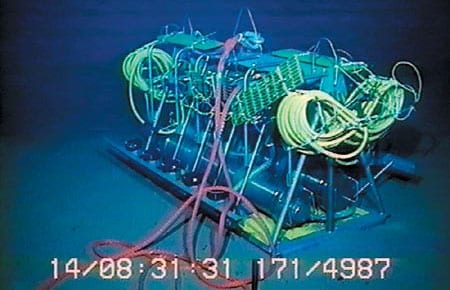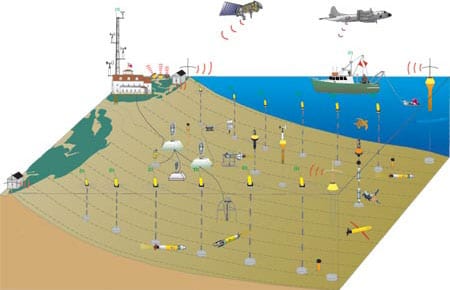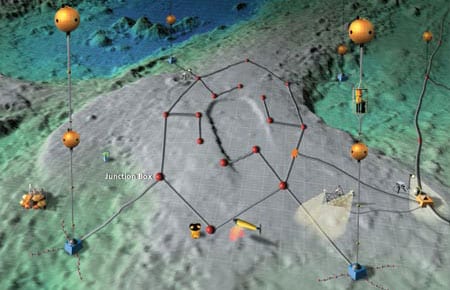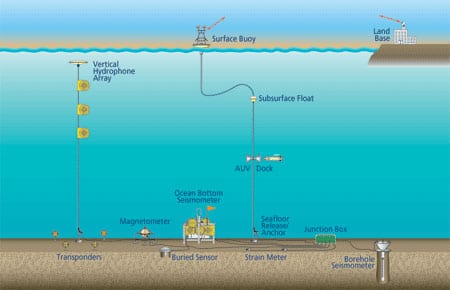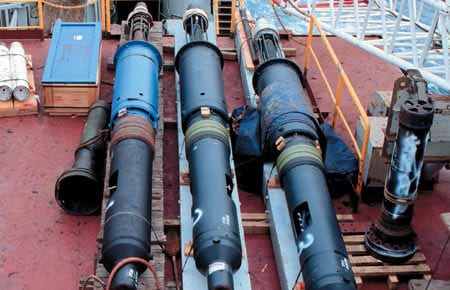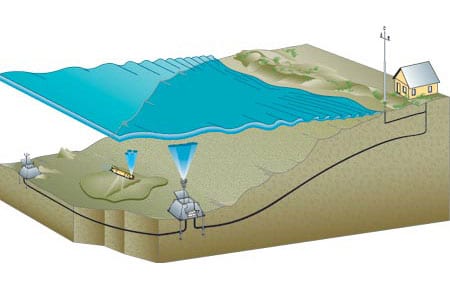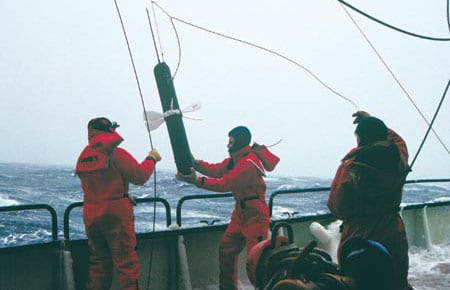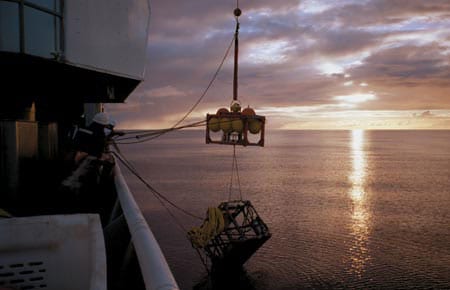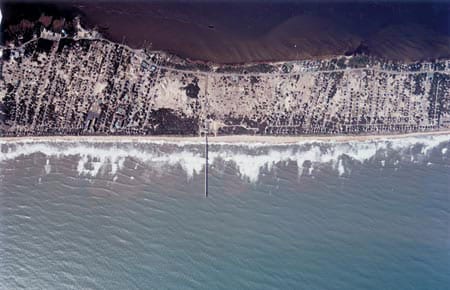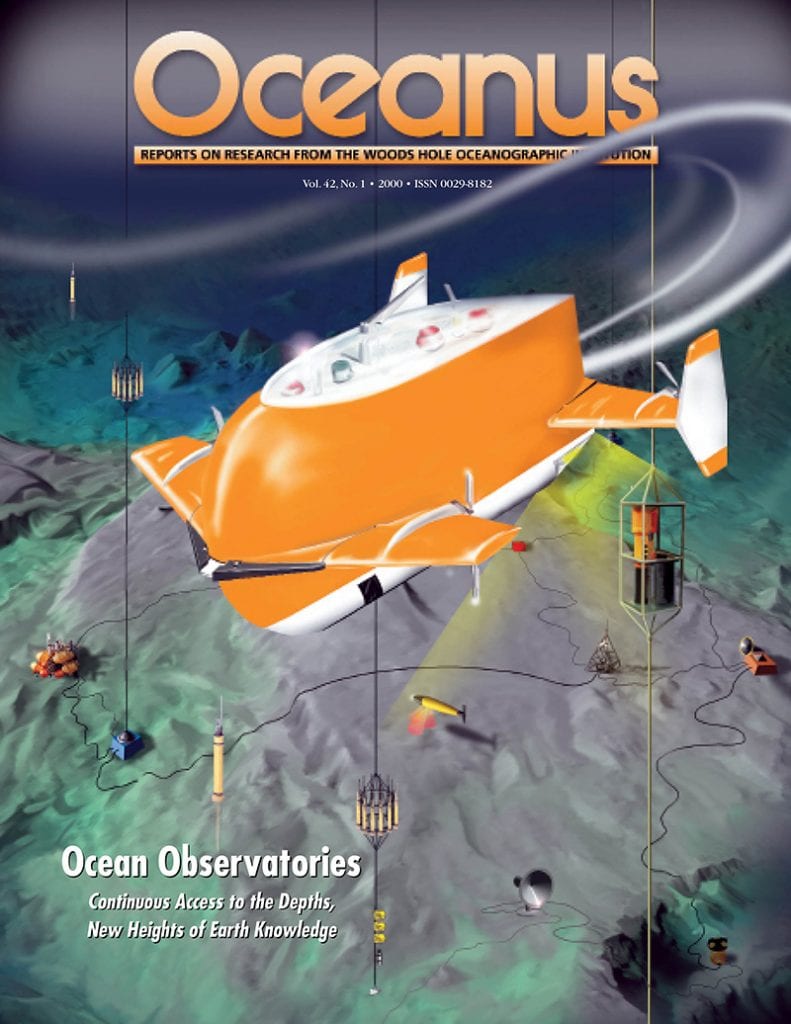
April 2000 ( Vol. 42 No. 1 )
and get Oceanus delivered to your door twice a year as well as supporting WHOI's mission to further ocean science.
Our Ocean. Our Planet. Our Future.

Seeding the Oceans with Observatories
Ship-borne expeditions have been the dominant means of exploring the oceans in the 20th century. Scientists aboard ships made the observations and gathered the data that confirmed the revolutionary theory of plate tectonics, which demonstrated that the earth is a complex, multi-faceted system that changes over time. But that revelation also exposed a major shortcoming of the ship-based exploratory approach: its very limited ability to quantify change.
A Well Sampled Ocean
Unlike the oceans, the sky is relatively visible and accessible to us. But in the ocean, the situation is quite different. Conditions and processes at work on any given day in the ocean are usually a mystery to us.
NEPTUNE: A Fiber-Optic 'Telescope' to Inner Space
NEPTUNE is a proposed system of high-speed fiber- optic submarine cables linking a series of seafloor nodes supporting thousands of assorted measuring instruments, video equipment, and robotic vehicles that could upload power and download data at undersea docks. Unlike conventional telephone cables, which supply power from shore in a straight line, end to end, NEPTUNE would operate like a power grid, distributing power simultaneously and as needed throughout the network. Working much like a campus data network (with nodes analogous to buildings and each instrument like a workstation), NEPTUNE would provide real-time transmission of data and two-way communications.
Seafloor to Surface to Satellite to Shore
The next great leap in our understanding of the earth-ocean system will require us to put our "eyes" and "ears" in the ocean to observe the dynamic processes going on there as they are happening, in real time.
Plugging the Seafloor with CORKs
Hidden beneath the seafloor throughout most of the world's oceans lies a massive, dynamic plumbing system that is a central component of our planet's inner workings.
Outposts in the Ocean
Oceanographers and climatologists have something in common with politicians and stock market analysts: They are all trying to get a grasp on a complex, ever-shifting system.
New Coastal Observatory Is Born
The Martha's Vineyard Observatory will have sensors mounted on two seafloor nodes, at depths of about 5 and 15 meters, respectively, connected to a shore station via a buried cable. Instruments mounted on the nodes will continually monitor mean sea and wave heights, current strengths, seawater turbulence, subsurface sediment movement, sunlight intensity, and the temperature, salinity, and carbon dioxide levels of the ocean?s waters.
Launching the Argo Armada
The Argo program proposes to disperse 3,000 floats, like the one below, throughout the oceans to collect data on oceanic conditions that can be periodically transmitted to shore via satellite.
Putting H2O in the Ocean
A major obstacle impeding our ability to understand many of the earth's fundamental, ongoing dynamics--quite frankly--has been a dearth of electrical outlets and phone jacks on the seafloor.
Where the Surf Meets the Turf
The gentle lapping of waves on the beach is a metaphor for enduring tranquility. However, the thin zone where the surf meets the turf is one of the most turbulent, complex, fast-moving, constantly changing places on Earth.

